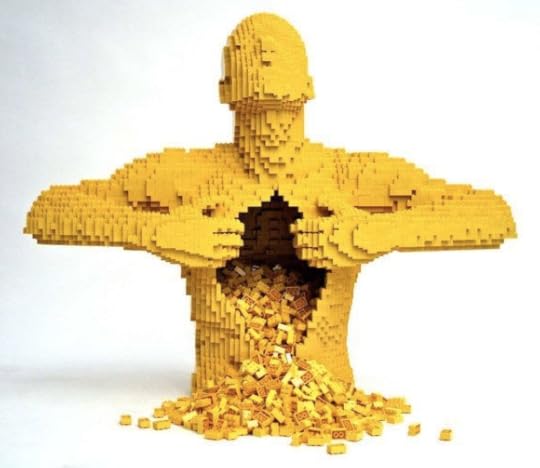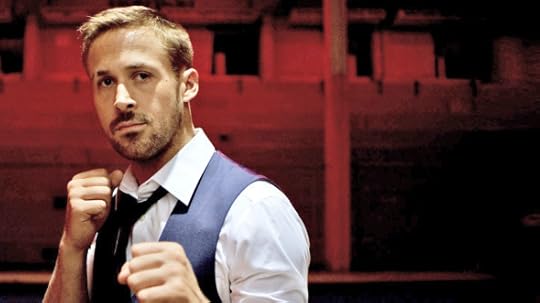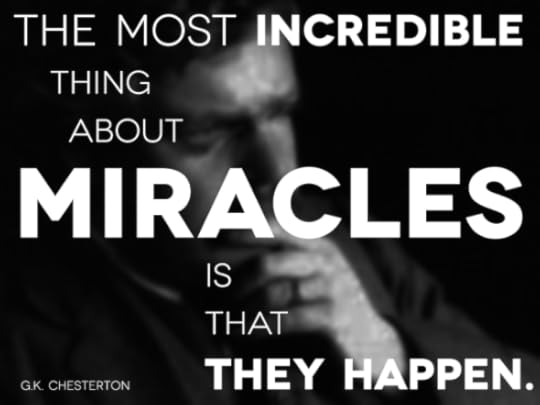Peter Rollins's Blog, page 32
August 17, 2013
We Are Joined By Our Difference: Some Thoughts on the Eternal Honeymoon
I would like to do a brief reflection on the nature of loving relationships and the idea of the Eternal Honeymoon (relying on a little Lacanese). There is often a fantasy, propagated across our culture, of a couple who are able to make each other whole, complete and fulfilled. Not surprisingly the stories that describe this vision tend to end at the moment when the couple meet: often signaled by the phrase, “and they lived happily ever after.” What this suggests is that, after all the dragons have been fought, the evil step mothers overcome and the curses broken, the couple melt into each others arms and… well presumably watch TV. The problem here is that, not only is such a view a type of fiction, but that it actually gets in the way of developing what might be a truly enriching, exciting and enduring relationship. A relationship what might well be a type of “eternal honeymoon,” not simply in the sense of it having the intensity of the honeymoon period, but more in the sense that it effectuates and extends the temporary state that is represented by the word “honeymoon,” a state that traditionally gives way to settling down.
In order to get to this type of relationship there must first be a crisis, a failure. This failure is one in which we realize that this idea of completing another is false. Yet it is this very failure that ultimately reveals a success (as Zizek would say), at least to those with eyes to see. This is something I would like to devote more attention to in the future, however for now I will simply outline the basic moves,
1. There is a gap that lies between us
This is the first manifestation of the traumatic failure. It is the point when one realizes that there are issues that get in the way of them becoming one with their beloved. Whether the two people are in an existing partnership, or unable to consummate their love, a crack is revealed that cannot but strike both as horrible. The fantasy we have is that this gap can be abolished, however despite those wonderful fleeting moments in which two lovers feel like extensions of each others being, the gap remains between two subjects.
2. There is a gap within me
This leads to a further horror. Namely that the gap which separates you from me exposes a gap that separates me from myself. It feels that the only way that I can close this inner gap is if I close the gap between myself and my lover, yet this gap cannot be filled in. The first gap is thus redoubled: I cannot be one with myself if I cannot be one with you.
3. There is a gap within you
The next step involves realizing that gap within you mirrors the truth of your beloved; that she is not at one with herself. This is also a profoundly difficult insight, not only because it involves the recognition that your beloved is also caught up in the impossibility of ultimate fulfillment, but that you cannot then be that which makes her whole. You cannot complete her anymore than creative work, children, travel, marriage, yoga or parties can.
4. The gap within each of us overlap
This however all opens up the possibility of turning these various failures into success through a change that happens at a purely formal level. For as I learn to embrace the insight that the gap that manifests itself between and within us is precisely what each of us share and thus what brings us together. Our respective gaps overlap and we realize that we are unified in our restlessness, in our ongoing desire, in our frustrations and in our openness to the future. Far from idealizing “settle down” this leads to a dynamic type of romantic coupling that is fueled by ever-new challenges, political engagements and/or artistic expressions. None of which are embraced because of some idea that they will fulfill, but because they fuel the circuit of the couples insatiable desire. In short we discover a couple who are sated by their hunger.
August 9, 2013
Only God Forgives: Discovering the mOther’s lack
**With Spoilers**
A few nights ago I went to see Only God Forgives, written and directed by Nicolas Winding Refn. On the surface this is a highly stylized, disturbingly violent story of revenge. Yet even then it is anything but straightforward. Unlike most revenge movies, which are shot from the point of view of someone seeking retribution from an evil individual or organization, this is shot from the opposing point of view.
After the father of a teenage girl kills the man who raped and slaughtered her, we discover that the person he murdered is actually the son of a powerful woman who runs an illegal drugs company. Upon hearing of her son Billy’s death, she travels to Bangkok (where the murder took place) and goes about seeking revenge. Two people were involved in the killing of her son and so she plans their murder: the father of the young girl and a police officer who provided the opportunity for the killing to take place.
We, the viewer,are placed into the disturbing point of view of the violent, drug dealing family who are seeking revenge for the killing of a psychotic child rapist and murder. In particular we see things from the point of view of Billy’s brother, a man called Julian who runs a boxing club in the city.
Interesting as this is, it is not the surface story that makes this film so fascinating, nor is it the impressionistic, almost dream-like, way that the story is told, or the rich and stylized tone it takes (all of which are mesmerizing), but rather the way that it delves so deeply into the realm of the unconscious, revealing hidden depths in a way reminiscent of Hitchcock and Lynch. For this is not really a story of revenge, but rather the story of a brother attempting to escape the suffocating over-proximity of his mOther.
In order to draw this out, I want to critically analyze the film through the lens of Lacanian psychoanalysis. Particularly using his categories of alienation, separation. psychosis, perversion and the Name-of-the-Father. Something that will involve shifting our focus from the explicit story (the imaginary level) to the underlying relations at work within the film (the symbolic level).
What we have here is a family made up of three: two brothers and a mother. The father is completely absent and, we later find out, was actually murdered by Julian. From early on we learn that both sons have a disturbingly close relationship to their mother, but this is manifest in two different ways.
Billy, the first born, is the mother’s favorite and we find out that they had a type of unbroken bond. From a Lacanian perspective we learn that alienation had not taken place between the two.
Alienation represents the first psychological break that one has with the mother, a break in which the child experiences a gap existing between him or herself and the mother.
This is the first role of the Name-of-the-Father, which basically describes that which gets in the way of the mother/child relation by saying “no” (this can also then be written as the No-of-the-Father).
It is obvious that alienation has not taken place between Billy and his mother through the way that she talks about him. Her first-born is described as that which completed her i.e. as the phallus for her. Indeed she even has a conversation in which she talks about the size of Billy’s penis, saying that it was huge in comparison to her other sons.
The problem is that alienation must take place or an individual will take up the structure of a psychotic; something that we see ecidenced in the way that Billy acts. The psychotic has not been able to gain any distance from the mOther and thus feels possessed by another, often hearing voices, seeing things and being possessed by an alien within.
In contrast to the relation between Billy and his mother, alienation has occurred for Julian, something that is evident in the somewhat disparaging way that she talks to him. She makes it clear that while Billy completed her, he does not. Yet this is also betrayed by the sexual relationship/desire she has for Julian and the way that she hints that he might be able to be what she needs. From a Lacanian perspective alienation can be said to have taken place (Julian experiences a distance from his mother) but separation has not.
Separation is the second role of the Name-of-the-Father, namely the point when the child learns that the mother has other desires outside of her desire for the child. This is the point when the gap that comes into being between the child and mother (alienation) is redoubled and the child discovers this gap as also existing within the mother.
In other words, the child discovers that s/he cannot plug up the lack in the mOther, because the mOther is by nature a lacking being. Up until then the child thinks that s/he can get absolute pleasure through being the object of the mother’s absolute pleasure. But the discovery that the other can’t have absolute pleasure means not only 1) experiencing the acknowledgment that the other is castrated (without that which can give them absolute pleasure) but also 2) experiencing/accepting ones own castration (cannot gain that pleasure by being the object of the others pleasure – an excessive pleasure called jouissance).
If this does not happen then the child is caught in perversion, which is the place where one gets their pleasure by imaging that they are the object of the others pleasure. This is obviously the position of Julian who is alienated from his mother, but not separated from her. For instance, he attacks his partner for asking why he allows his mother to dominate him and he engages in a form of voyeuristic sexuality in which he is tied to a chair and watches as a woman touches herself. Here his sexual pleasure is found not in his own sexual orgasm but in gazing at a woman who is able to gain pleasure while being looked at by him (he is the object of the other’s pleasure).
For the one caught in perversion the unconscious desire is to find someone (or something) that can enact the Name-of-the-Father, i.e. that which will bring separation from the over-proximity of the mOther. Someone that they will resist at a conscious level. His biological father cannot fulfill this role because he killed him, thus preventing him from fulfilling the role. He was too strong for his father and thus missed out on the possibility of his father helping enact the separation.
In the film itself the police officer is the one who might be able to fulfill this role for Julian. In a similar way to the time when Julian fought (and killed) his father, he gets into a situation in which he is to fight the officer. But now something very different takes place. Instead of killing the officer Julian is beaten to a pulp.
This is not a standard fight in which Julian simply loses through being out skilled and out maneuvered. He is a boxer who is younger and stronger than the officer. While he might well have lost even if he didn’t want to, this fight is a total whitewash, leading the viewer to conclude that both people wanted him to lose. Julian needed to be beaten because he needed to reverse what happened with his father and find someone strong enough to break his bond with the mother. The officer is then experienced both as a threat to be done away with and as a possible candidate to bring about freedom. Hence he must try to beat him up and yet hope to fail.
This happens and then the police officer goes on to kill his mother (not before his mother pleads to Julian to protect her). But this is not the end, for Julian goes to the corpse of his mother, slices it open and places his hand inside her: he must experience for himself the truth that there is a lack in his mother.
But to be free he must not simply experience his mother’s castration; he must also embrace his own. So then in a brief scene we see the police officer who killed his mother slice off Julian’s or hands with a ceremonial sword (a sword which is referenced throughout).
This sword is the device that effectuates the castration of both mother and son. For Julian to lose his hands is to lose that which represented the possible object that would make his mother whole (indeed the last thing she asked of him was to use his power to protect her). His hands were her weapons, they represented what she desired. He had to experience his hands letting him down, which he did in his attempt to kill the police officer, and now he needed to lose them so that he might (if even only for a moment) experience separation from his mother.
This article only touches on what I take to be the central insight of the film, but there is much more to explore. Also I should say that I don’t want to reduce the film to some crude psychoanalytic metaphor. The film itself is much more subtle, thoughtful and impressionistic than that. But what I do wish to draw out is the way Nicolas Winding Refn takes on what so many today refuse. What we witness in independent film making today is a (justified) rejection of transcendence above immanence. But this embrace of the “plane of immanence” (through a concentration on interesting dialogue, general ennui and the happening of nothing) misses the opportunity to explore and make manifest the transcendence within immanence i.e. the unconscious. This, for me, is what makes Only God Forgives such an important, fascinating and needed film today.
August 7, 2013
Event, Belfast, NI
I have begun to curate yearly events with a small number of people that involves talks, discussions, music, workshops and much more. Read about the last event here and see the timetable of events (as some pics of the four days) here. We are currently in the throws of planning the next one. More information to follow in the coming months.
Lutheran Seminary, Waterloo, ON
I will speaking as part of a year of public events on the following theme,
Faith Beyond Empire
As people living at the beginning of the 21st century, we are confronting the challenges of an increasingly interconnected global community and local communities that are becoming increasingly diverse. What does it mean to practice faith in such a changing context, when one can no longer think or operate out of the assumptions of Christian hegemony or isolationism?
Through this year*s public events, at Waterloo Lutheran Seminary, we invite you to explore this question with us, as we engage, listen, dialogue, and do theology with those whose perspectives challenge us to wrestle with what it means to re-envision faith and the role of the church in the midst of multi-faith, multi-centric communities.
More information to follow
August 2, 2013
Mars Hill, Grand Rapids, MI
July 25, 2013
Building a Temple
I have just seen the artwork for my forthcoming book The Divine Magician, and I have to say, it looks amazing. It is going to take a while for it to actually come out (we are in the final editing phase at the moment), so I thought I’d give you a little taster now. This is from chapter seven and just happened to be what I was re-reading when I got the artwork through. It also features my best friend Seamus, though I don’t mention him by name (my thanks to Mark Andrew, who posted a version of this story on my FB a few months ago),
There was once a competition that asked people to construct the largest possible sheep enclosure using a limited set of materials.
Three people entered: a mathematician, an engineer and an old Irish farmer.
Each of them were given basic tools, a pile of wooden planks and twenty-four hours to complete their pen.
When it came time for the judges to decide the winner they begin by examining the mathematician’s work. She had used her extensive knowledge of geometry to construct an impressive circular structure that maximized the utility of the materials. As a result nothing went to waste and a hundred sheep could easily be held.
Next they looked at the pen created by the engineer. His was more basic but twice the size of the mathematicians. Again he had used all of the material, but he had spent much of his time studying the strength of the wooden planks and worked out that it he could split them in two without compromising the security of the pen.
Lastly they came to the old farmer who, in contrast to the others, was surrounded by unused planks and bags of nails. They watched on in disbelief as the farmer stepped into the one foot square box he’d made.
“Is that your enclosure?,” said one of the judges in disbelief.
“Of course not!” replied the farmer, “I’m on the outside. You’re standing in it!”
The logic of this joke can help us glimpse the ultimate role of the temple: it is the place where the great reveal, the Turn of the trick, takes place. It is a place where the apocalyptic tearing of the magician’s curtain occurs and the Holy of Holies is exposed before our very eyes as an empty container.
It is a place that people gesture toward, laugh and say, “Is this where the sacred dwells.” To which the response must be, “Of course not! You’re already standing there.”
It is a place that displaces, a door that leads us back to where we started, much like the door in a horror film might lead the protagonist back into the very room she thought she was leaving.
It is then a space that reveals it’s own emptiness as a “deep” space so as to expose the depth dimension of all space.
July 24, 2013
The Pentecostal Materialist: Provisional thoughts on the Meaning(lessness) of Signs and Wonders
“Every ‘miracle’… becomes the manifestation of the inexistence of God”
Quentin Meillassoux
In the debate about miracles there are generally two clear opposing lines: those who argue for their existence and those who argue against their existence (with various forms of weak and strong agnosticism in the middle). What these positions take for granted is the idea that a miracle would be evidence of some divine source.
Into this popular debate the philosopher Quentin Meillassoux makes an initially startling and even ridiculous claim (which is how novel ideas almost always sound to us), namely that miracles do occur, and that they point towards the inexistence of a divine source (as classically understood in theistic traditions).
The argument in brief is that truly novel events do occur in the universe, events that are not the result of a simple chain of cause and effect (his examples are: being out of nothing, life out of being, thought out of life) and that these reveal to us the ultimately contingent and chaotic nature of the universe in-itself. In more arcane and unpopular existential terms, a miracle is a glimpse into absurdity or the abyss.
Strange as the argument might sound, this materialist defense of miracles has a certain continuity with a reading of signs and wonders that I have been developing recently (inspired by the book Christ and the End of Meaning by Paul Hessert).
Basically the traditional battle lines on the subject of signs and wonders are between those who believe that they exist and those who don’t (again with agnostic positions in the middle). In the former it is argued that a universe without divine agency would lack signs and wonders, hence their existence points toward divine agency, while in the latter it is argued that the human brain is a meaning making system that finds patterns and correlations were none actually exist.
In one signs and wonders exist ‘out there,’ while in the other they are a type of projection of the human mind onto an ultimately indifferent world of brute being.
It is the work of Paul that renders problematic these simple categories, for it is well known that he wrote against signs and wonders, arguing that ‘Christ Crucified’ was foolishness to one and a stumbling block to the other. In other words, crucifixion is the breaking apart of signs and wonders because it signals divine curse and abandonment.
Signs and wonders traditionally point to divine love, order and justice (even if they are destructive) so the crucifixion of Christ could not, from the traditional standpoint of signs and wonders, be seen as anything but absurd (hence Paul’s claim).
So the notion of signs and wonders, Christologically speaking, is broken apart by the central event of Christianity.
Yet in the midst of all this, ‘Christ Crucified’ is itself a strange, radical sign. It is a type of ‘sign and wonder’ that breaks open the very meaning of signs and wonders and renders them foolishness.
These are only very basic notes to a future book, but it seems to me that this opens up a new type of, for want of a better word, religious being: the materialist mystic, or the Pentecostal materialist.
This would be one who believes that signs and wonders really do exist (rather than being merely a reflection of the human mind as an order making structure), but that they reflect the nature of the universe itself as an utterly immanent order making structure without ground. In short, that there are signs and wonders in the universe itself, but these manifest the ultimate contingency and chaos of the universe in-itself.
Like all my work, this is not some detached speculation, but an honest attempt to reflect upon my own experience of signs and wonders in my own life.
July 23, 2013
High Gravity Radical Theology Reading List
Recently I’ve been leading an in-depth, online reading group with Tripp Fuller that aims to introduce people to some of the seminal thinkers behind the movement often called Radical Theology.
With two hundred people having signed up for the six weeks the whole thing has been a great success and is something I’m keen to experiment with again. Anyway here is a list of what we covered in the course. If you sign up you can still access all the articles and video lectures.
Week 1 – Paul Ricoeur
“The Critique of Religion” and “The Language of Faith”
Union Theological Quarterly, 28, no. 3 (1973)
Week 2 – Martin Heidegger
“Phenomenological Explication of Concrete Religious Phenomena in Connection with the Letter’s of Paul”
The Phenomenology of Religious Life
Week 3 – Dietrich Bonhoeffer
Excerpts from Letters and Paper’s from Prison
Letters and Papers from Prison
Week 4 – Paul Tillich
“God above God” and “Two Types of Philosophy of Religion”
Week 5 – John Caputo
“Theopoetics as the Insistence of Radical Theology”
Week 6 – Slavoj Žižek
“The Fear of Four Words: A Modest Plea for a Hegelian Reading of Christianity”
Over Lent in 2014 we will be running another online reading group as part of Atheism for Lent. More information to follow
June 28, 2013
We Are The Naked Emperor: On Not Wanting to Know What We Know
One of Hans Christian Anderson’s most famous short stories is The Emperors New Clothes. It concerns a vain Emperor who loves nothing more than wearing the finest of clothes. So he hires a couple of charlatans who convince him that they can make make the most beautiful outfit made from an exclusive material that is invisible to all but the smartest and most noble. The Emperor’s advisors can’t see the material, but they pretend so as not to look stupid or unfit for their office. The Emperor also afraid of looking like an idiot also goes along with the charade.
Eventually the fraudsters finish the suit, “dress” the Emperor and let him parade around the kingdom. The townsfolk also play along with the pretense, not wanting to appear stupid. But there is a child in the crowd who blurts out that the Emperor is wearing nothing at all. Something that exposes the foolishness to everyone, who begin to laugh and mock. The Emperor also suspects the truth, yet continues his procession.
This is a deeply insightful story that exposes how we can know something yet refuse to acknowledge that we know it. We see this structure of “refusing to know what we know” beautifully expressed in the following advert from Thailand,
June 26, 2013
Festival of Homiletics, Minneapolis, MN
Peter Rollins's Blog
- Peter Rollins's profile
- 314 followers








